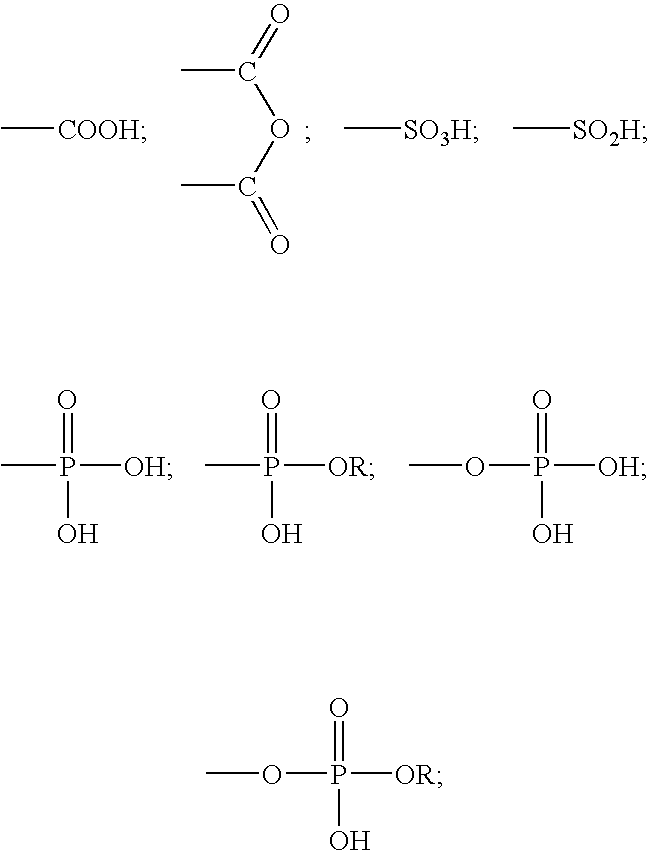Methods of using two-part self-adhering dental compositions
- Summary
- Abstract
- Description
- Claims
- Application Information
AI Technical Summary
Benefits of technology
Problems solved by technology
Method used
Image
Examples
example 1
In making all the pastes in this example, first all the monomers and any ingredients soluble in the resin mixture were mixed together to make a homogeneous liquid mixture, and then the fillers (TS-530, ST-OX-50, Sr / Zn FAS Glass, or Barium Glass) were blended into the liquid mixture to make the paste.
A paste / paste two-part self-adhering dental cement composition was prepared and tested as an example. A first paste using 1,1,3,3-tetramethylbutyl hydroperoxide (TMBHP) / cumene hydroperoxide (CHP) oxidizing agents and acidic monomers GDM-P, and a second paste using 1-(2-pyridyl)-2-thiourea (PTU) as the reducing agent, was made.
First (Catalyst) PasteBisGMA3.23GDM-P16.96HEMA7.27GDM4.85BHT0.05TMBHP0.57CHP0.57TS5302.00ST-OX-503.23Barium Glass61.28
Second (Base) PasteUDMA22.00ETMPTA5.50CQ0.17MEHQ0.010EDMAB0.28PTU0.54TS-5303.00ST-OX-504.80Sr / Zn FAS Glass63.70
When mixed at 1:1 ratio (by volume), the above first and second pastes had a set time of 3 minutes 50 seconds (3′50″).
A bonding str...
example 2
The two pastes from Example 1 were mixed at 4:1 (first paste:second paste) ratio (by volume). The set time was 5′40″. Bonding strength of the mixed composition was determined as in Example 1. With the two pastes mixed at a 4:1 (by volume) ratio, the bond strength to an unetched and unprimed dentine substrate was 8.87 MPa (average of 6 specimens) in self-cure mode. This is almost double the bond strength of that obtained over that in Example 1 using a 1:1 (by volume) ratio.
The above examples clearly illustrate the usefulness of the inventive method. The inventive composition may be used as a dental restorative composition, an endodontic composition, and an orthodontic composition. Useful restorative compositions include a dental filling material, a cement, a liner, a base, a pit / fissure sealant, or an adhesive composition. Useful endodontic compositions include an endodontic sealing and / or filling composition for the sealing and filling of a root canal, or an endodontic adhesive o...
PUM
| Property | Measurement | Unit |
|---|---|---|
| Fraction | aaaaa | aaaaa |
| Fraction | aaaaa | aaaaa |
| Fraction | aaaaa | aaaaa |
Abstract
Description
Claims
Application Information
 Login to View More
Login to View More - R&D
- Intellectual Property
- Life Sciences
- Materials
- Tech Scout
- Unparalleled Data Quality
- Higher Quality Content
- 60% Fewer Hallucinations
Browse by: Latest US Patents, China's latest patents, Technical Efficacy Thesaurus, Application Domain, Technology Topic, Popular Technical Reports.
© 2025 PatSnap. All rights reserved.Legal|Privacy policy|Modern Slavery Act Transparency Statement|Sitemap|About US| Contact US: help@patsnap.com



